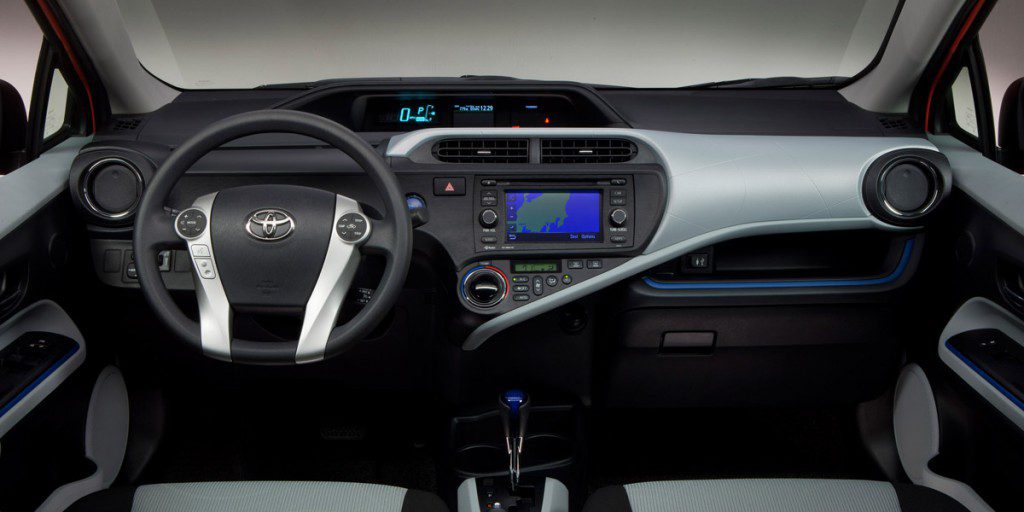| Subcompact car; Built in Japan |
|
|
| Good condition price range: $5,800 – $15,400* |

2012 Toyota Prius c

2012 Toyota Prius c

2012 Toyota Prius c

2012 Toyota Prius c
| Pros: |
|
| Cons: |
|
The Prius c might be short on acceleration and quietness, but it’s big on fuel economy. Very big, actually, as it recorded some of the highest fuel economy numbers we’ve ever seen. Toss in decent versatility, passenger room, and a price tag that rivals many non-hybrid small cars, and you have an ideal choice for those who place a high value on frugality in all forms.
Overview
Prius c was the smallest member of Toyota’s gas/electric hybrid “family,” which consists of this car, a subcompact 4-door hatchback, the standard Prius hatchback with whom you’re probably most familiar, and the larger Prius v wagon.
Like all other Prii (the official plural of Prius), the c was made in Japan. Competitors can include the conventional Chevrolet Sonic, Honda Fit, and Kia Rio. We also suggest cross-shopping the slightly larger, but similarly priced, Honda Insight hybrid.
The 2012 Prius c was offered in four trim levels labeled One, Two, Three, and Four. One included automatic climate control, tilt/telescopic steering wheel, folding rear seat, power mirrors/windows/locks with remote entry, digital-media player connection, USB port, and wireless cell-phone link.
Two added cruise control, height-adjustable driver seat, and split folding rear seat (the One had a one-piece folding seat). Three had a navigation system and Toyota’s Entune infotainment system. Four added leather-like vinyl seating surfaces, heated front seats, and alloy wheels. Optional on the Four were 16-inch wheels in place of 15s.
The Prius c was equipped with a 73-horsepower 1.5-liter 4-cylinder engine paired with electric motors for a combined 99 horsepower. The only transmission was a CVT that behaved much like an automatic. Like all Toyota hybrids, the front-wheel-drive Prius c could run on one or both of its power sources to balance acceleration and fuel economy.
The EPA rated the 2012 Prius c at 53 city/46 highway. Compared to the “regular” Prius, that was up by 2 mpg in the city, down by 2 mpg on the highway. Prius c ran on regular-grade gas.
Prius c came with all the expected safety features plus a driver knee airbag.
Yearly Updates
| 2013 Prius c Changes for the 2013 Prius c were mostly minor, centering around improvements to some of the interior trim pieces. |
| 2014 Prius c The 2014 Toyota Prius c saw no significant changes. |
| 2015 Prius c The Toyota Prius c saw a round of mild cosmetic changes for 2015, that included a new front fascia, new taillights, and some upgraded interior materials. |
